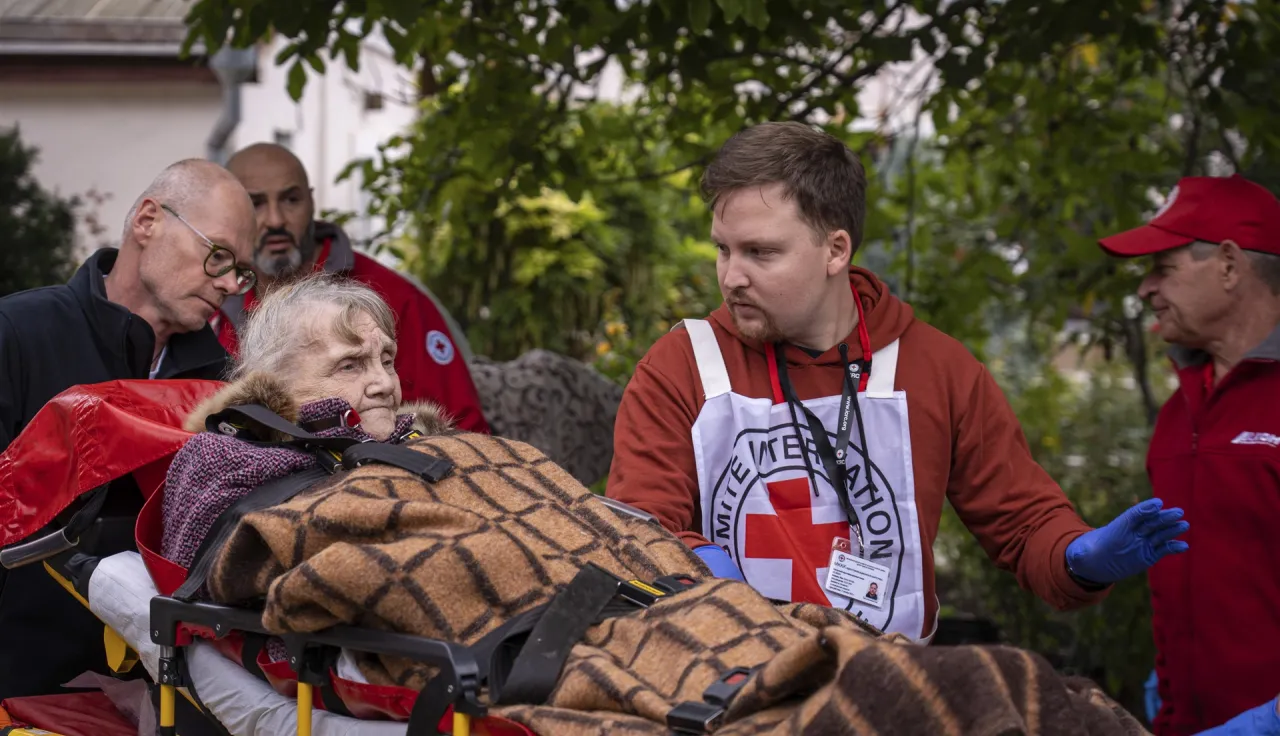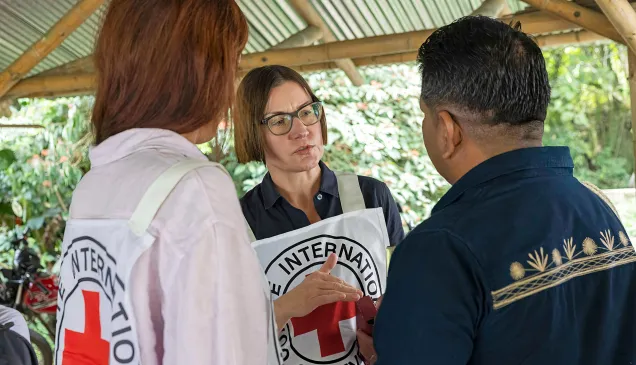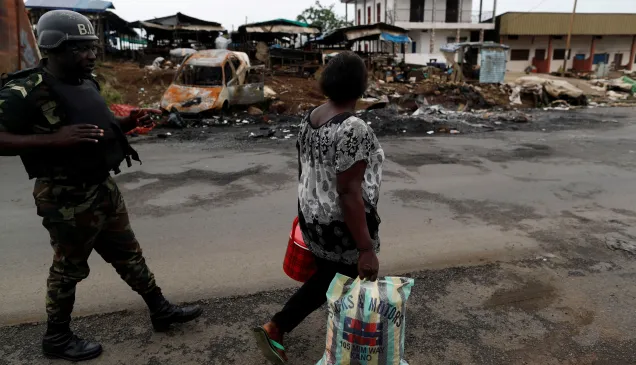Protecting civilians in good faith: The Updated Commentary on the Fourth Geneva Convention

At a glance
- What it is: The 2025 updated Commentary on the Fourth Geneva Convention
- Why it matters: It reaffirms the Convention’s protective purpose for civilians in today’s conflicts
- Who it’s for: Practitioners, policymakers, military lawyers, and academics applying IHL in practice
- What it offers: More than 75 years of State practice, legal developments, jurisprudence, scholarly debate and operational experience distilled into one reference tool
What is the updated Commentary on the Fourth Geneva Convention?
The Fourth Geneva Convention, adopted in 1949, codifies the protection of civilians in times of international armed conflict and occupation. Born from the ashes of the Second World War when the international community vowed to set limits on warfare and to shield civilians from its worst effects, its rules prohibit violence against civilians, guarantee access to humanitarian relief, and regulate the responsibilities of occupying powers.
As conflict evolves, so does the way humanitarian law is understood and applied. Updating the Commentary on the Fourth Geneva Convention seeks to ensure that this interpretive tool remains both authoritative and usable by situating it in contemporary realities to reaffirm the protective purpose of the Fourth Geneva Convention.
The 2025 updated Commentary brings together more than 75 years of State practice, legal developments, judicial decisions, scholarly debate and operational experience. It serves as a practical guide to applying the Convention’s safeguards effectively in today’s conflicts — marked by urban warfare, attacks on essential services, severe humanitarian needs and mass displacement.
Why is this update so essential right now?
We are witnessing the protective purpose of the Fourth Geneva Convention being tested like never before.
As the balance between military necessity and humanity is woven into the Fourth Geneva Convention itself, powers such as internment or security measures are strictly limited by safeguards to prevent abuse. While recognizing the realities of war, it never allows those exceptions to swallow the rule.
Yet too often, its legal provisions are misused to justify the very harms they were meant to prevent. These trends highlight why good faith interpretation of the law is crucial. The updated Commentary reclaims that protective purpose. It provides the clarity and authority needed to ensure the law is properly understood and applied to protect civilians — not to justify harming them.
Why is “good faith” interpretation essential for civilian protection?
Interpreting and applying the Fourth Geneva Convention in good faith means ensuring that its humanitarian purpose is fulfilled in practice. This requires adapting interpretations as warfare and technology evolve — for instance, understanding the prohibition on exposing protected persons to public curiosity as applying not just to print media but also to social media exposure today.
When States or parties to conflict interpret obligations narrowly, they risk emptying the law of its meaning. Examples include :
- Granting humanitarian relief passage in principle, but imposing burdensome procedures that prevent delivery.
- Providing internees with minimal food rations that fail to maintain health and dignity.
- Treating timelines such as “without undue delay” as flexible rather than urgent.
Such readings violate both the letter and spirit of the Geneva Conventions. Their drafters knew that protection would only be real if limits on warfare were taken seriously. The principle of good faith anchors those limits — ensuring that humanitarian purpose always prevails over expediency.
How does the updated Commentary help protect civilians today?
Improved compliance with international humanitarian law (IHL) starts with a shared understanding of what the rules mean. The updated Commentary translates decades of legal and operational experience into practical guidance for those applying the Fourth Geneva Convention — from military practitioners and humanitarian policymakers to academics and judges.
Over the past 75 years, the Fourth Geneva Convention has been interpreted through real conflicts, shaping its application in crucial ways. New technologies, changes in warfare, and advances in medicine all affect how its rules are implemented.
This updated commentary clarifies how the Convention’s rules on occupation, internment and, humanitarian relief, should be understood and implemented in light of today’s realities — from digital communications to modern methods of warfare.
For instance, the prohibition on exposing protected persons to “public curiosity” now extends to digital and social media. Similarly, developments in international criminal law have refined the understanding of what constitutes a grave breach.
These are not marginal issues — they are central to fulfilling the legal and moral obligations that underpin protection in war.
What practical value does this updated Commentary offer?
For busy legal practitioners, policymakers, and humanitarian actors, the updated Commentary is a definitive shortcut to the best available legal research.
It explains, article by article, the obligations to protect civilians contained in the Fourth Convention — enriched with real-world examples drawn from practice. It integrates over seven decades of developments in human rights law, international criminal law, and the means and methods of warfare. It acknowledges diverging views, and provides citations that can lead to further resources on any of the topics raised.
Instead of spending weeks researching, users can turn to the Commentary for an authoritative, up-to-date understanding of how any given article should be interpreted and applied in modern contexts.
What is a typical example of how someone might use the updated commentary in their work?
It is, quite simply, a reference tool like no other. Without it, decision-makers risk relying on incomplete or outdated information — leading to flawed advice and weakened protection.
For example, a military legal adviser drafting guidance on occupation, or a judge considering humane treatment standards for internees. Questions arise about digital privacy, surveillance, or the use of facial recognition.
By consulting the updated Commentary — for example, on Article 27 — they can find the most current interpretation of how these obligations apply in light of modern technology.
In this way, the Commentary becomes a practical, problem-solving tool — helping practitioners make lawful, humane decisions in real time.
Completing the cycle of updated Commentaries on the 1949 Geneva Conventions
With the publication of the updated Commentary on the Fourth Geneva Convention, the ICRC completes its comprehensive re-examination of all four Geneva Conventions, before moving on to the 1977 Additional Protocols.
Together, these Commentaries consolidate more than 75 years of practice, jurisprudence, and field experience into vital tools for practitioners, policymakers, and scholars.
But they are more than reference works — they are guides to ensure that the Geneva Conventions are interpreted and applied as they were intended: for the protection of human beings in times of war.
See also:
- Read how ICRC’s updated Commentary on the 4th Geneva Convention offers the clarity to apply IHL in good faith today.



